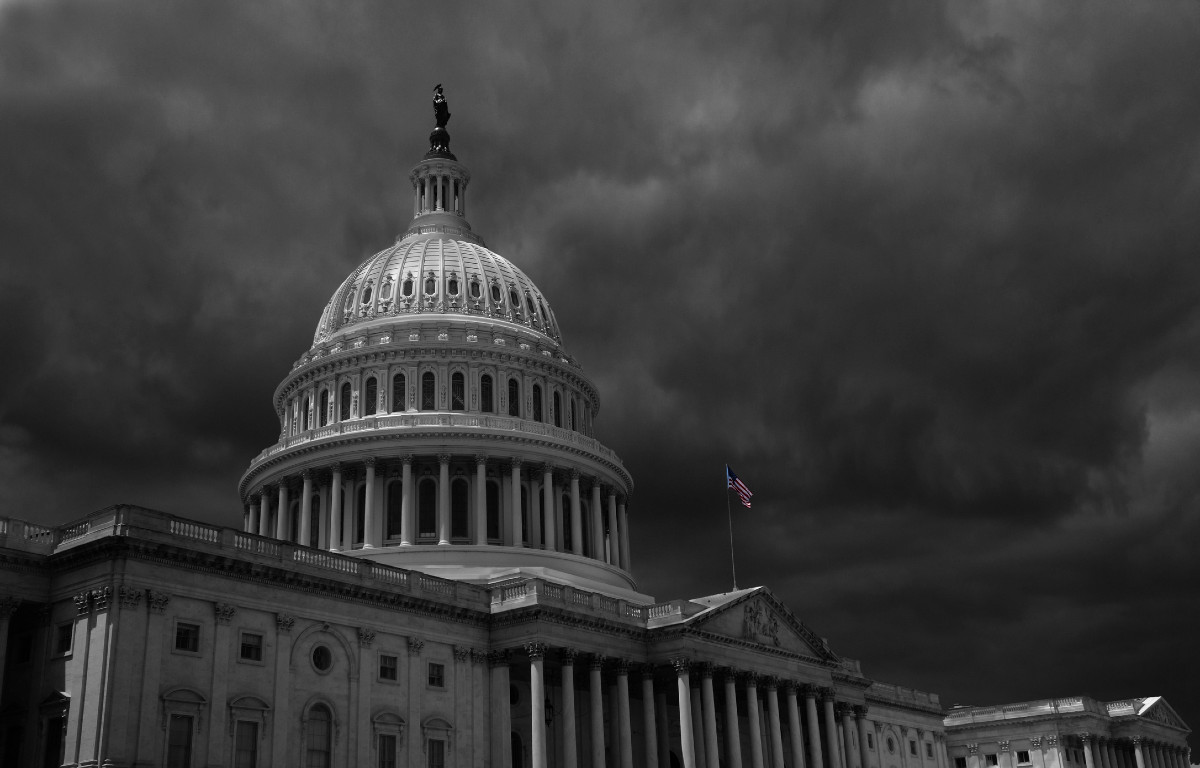 On January 6, the nation witnessed the largest assault on American democracy in contemporary history. Sitting in clinic at the time, I was fixated on my phone’s screen, staring at images of a noose, Confederate flags, and swastikas in front of and inside the Capitol. My angst soon gave way to righteous indignation. These symbols of hate, also found at racist attacks in Charlottesville, Louisville, Birmingham, Tulsa, and elsewhere, were now being displayed during the insurrection in Washington, D.C.
On January 6, the nation witnessed the largest assault on American democracy in contemporary history. Sitting in clinic at the time, I was fixated on my phone’s screen, staring at images of a noose, Confederate flags, and swastikas in front of and inside the Capitol. My angst soon gave way to righteous indignation. These symbols of hate, also found at racist attacks in Charlottesville, Louisville, Birmingham, Tulsa, and elsewhere, were now being displayed during the insurrection in Washington, D.C.
As I try to process this frightening moment, it is clear that those of us in medicine need to reflect on how the racism and bigotry fueling this attack are also present in the healthcare system.
Medicine vs. Malice
First, let’s dispel the notion that the mob participants are all from the lower socioeconomic rungs of society. Several reports point to healthcare professionals, small-business owners, and lawyers among those involved in the attack. Next, we must acknowledge that our institutions are only as strong as the values and belief systems of the people who operate within them. If we do not act with haste to ensure that our system of medicine is fortified with an infrastructure rooted in diversity, equity, and inclusion, we will remain fatally vulnerable to the insidious infection of bigotry that continues to creep throughout American society.
As a physician, I have lost count of the number of times a patient, student, resident, or colleague has vented about mistreatment personally experienced within our medical system. These incidents were the product of actions by other members of the same groups: patients, students, residents, and colleagues. It’s a cycle of cruelty to be expected if U.S. healthcare is viewed in a historical context. The architects of our system held unscrutinized beliefs that emphasized protecting some and dehumanizing others. This sentiment has persisted over generations and seeped into C-suites and health departments across the nation.
In December, Dr. Susan Moore, a Black physician who dedicated her career to the welfare of other human beings, died in an Indiana hospital following her own fight against COVID-19. In her last moments on Earth, she spoke out against the bias and mistreatment she was enduring while hospitalized. What happened afterward? In the wake of her death, the hospital’s chief executive officer betrayed Dr. Moore’s wisdom, intellect, and humanity by supporting the narrative that somehow her “intimidation” of the nursing staff led to her death. This gut-wrenching betrayal of a doctor by the system she worked in was easy to see coming, and foreshadowed the January 6 attack.
Michael Caputo, assistant secretary for public affairs at the Department of Health and Human Services in the Trump administration, who was helping lead the national coronavirus response, repeatedly misrepresented and suppressed evidence about COVID-19 that he felt reflected badly on the administration, and accused government scientists of “sedition.” In September, he stated that we needed to prepare for an armed insurrection after a contested election—an insurrection he felt would be led by left-wing insurgents opposing a second term for President Trump. Soon after making these comments he went on medical leave, but his warning about an insurrection came true, though not in the way he had predicted. These examples demonstrate how medicine has failed, despite extensive education and workforce training, to decouple dangerous ideologies held by some medical professionals from the valuable work performed by so many.
What’s Next?
The overwhelming flurry of emotions generated by this naked display of injustice in Washington, D.C., can be distracting and exhausting. Instead, it should renew our focus on the reality of inequity in healthcare. We can use this moment as our launching pad to answer questions on how we can do better, take the next steps, and implement long-overdue, necessary change. Let us start by unapologetically focusing the work of scholars and professionals in the fields of health equity and workforce diversity on these critical issues. This can no longer be an area of marginal, niche interest; it must be a fully supported pillar of medical care.
Next, more professional organizations should follow the American College of Physicians’ lead and acknowledge “that hate crimes, prejudice, discrimination, harassment, and violence against any person based on race, ethnicity, religion, gender, gender identity, sex, sexual orientation, or country of origin is a public health issue.” It is vital that our healthcare organizations signal to our community of patients, students, and providers that achieving equity will be the guiding principle in all decision-making.
We must not allow the weariness that arises from agitation and anger to lead us into the comfort zone of passivity and inaction. Health-system leaders should take heed of all these recent events and institute broad frameworks to mitigate the influence of the racism and prejudice that continue to infect our society. We don’t have all the solutions, but the ones we pursue must stress nuanced creativity, compassion, and unprecedented boldness to achieve successful reform. Medical care does not exist in a vacuum; it bears the scars of racism in America. Now is the time to courageously step into a future that embraces equitable care for all, so we can begin erasing those scars.

